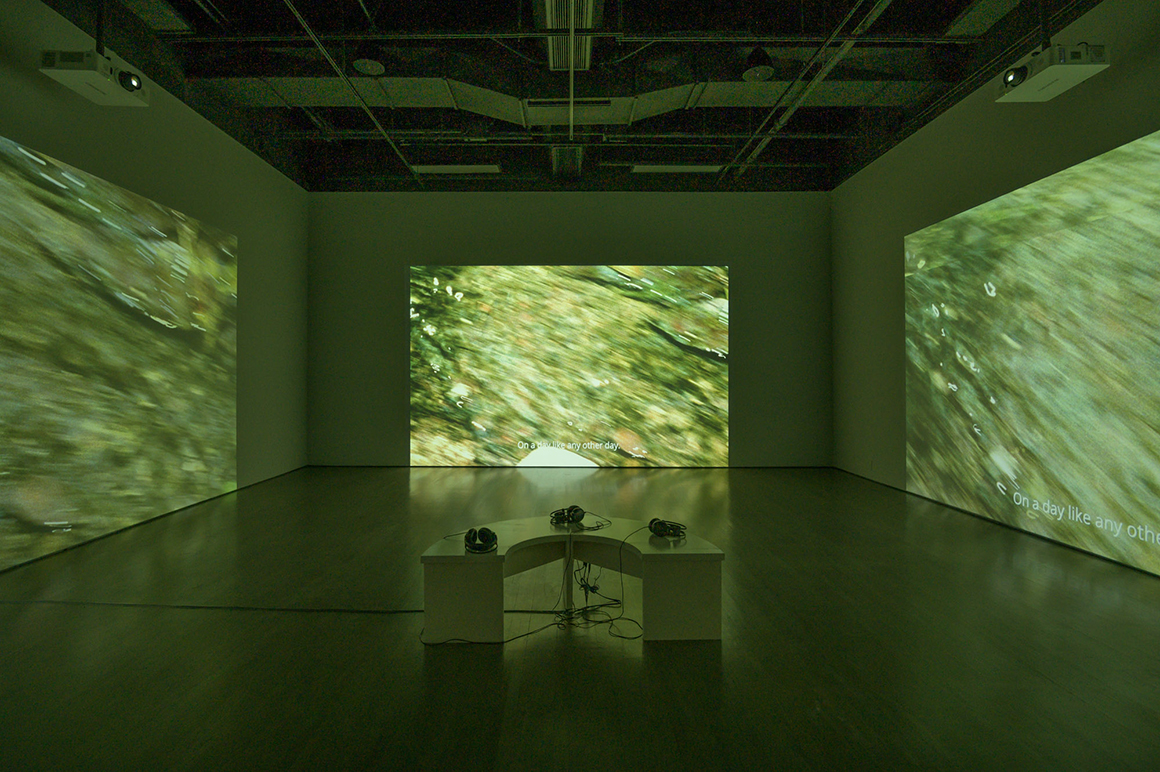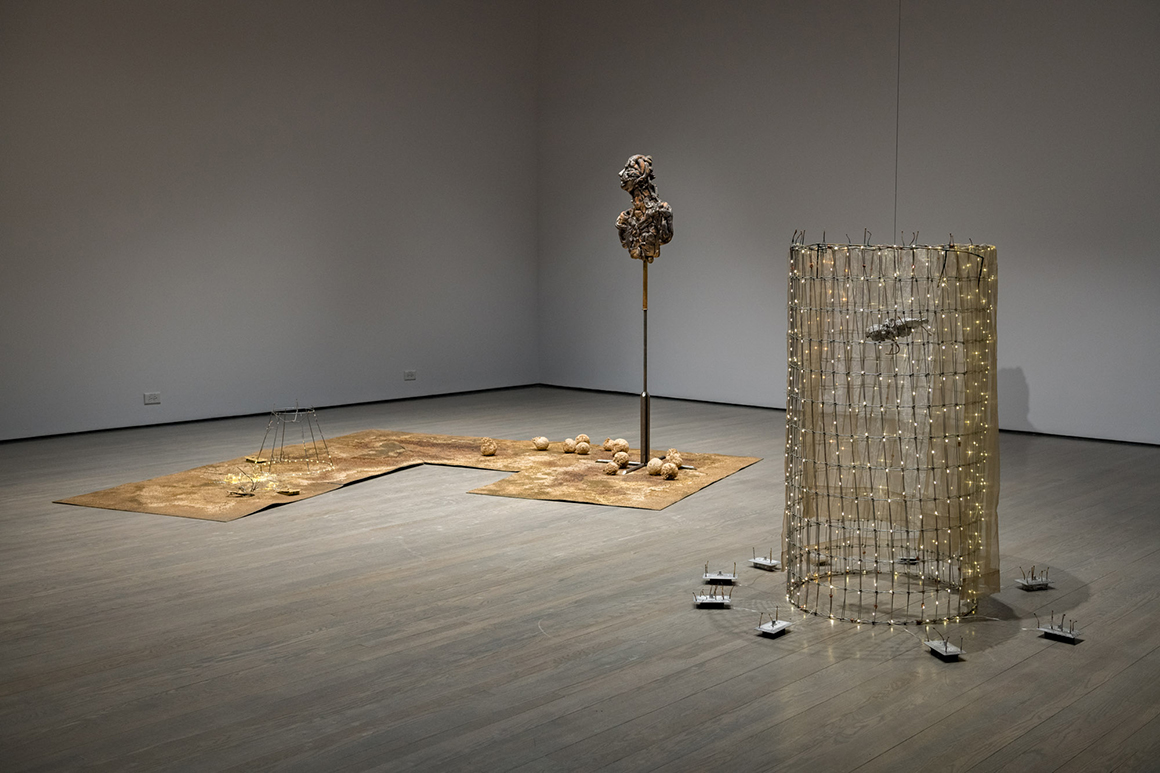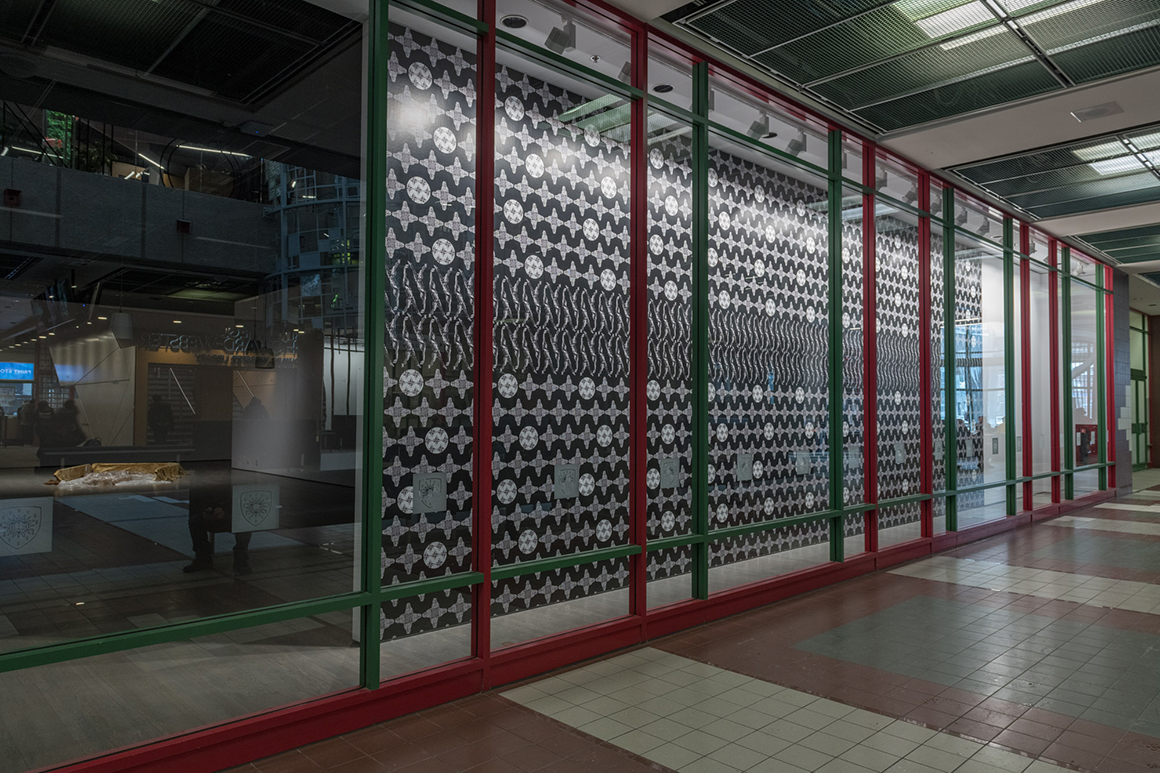February 5 to April 4, 2020
Curator: Julia Eilers Smith
Miryam Charles, James Nicholas Dumile Goddard, Rochelle Goldberg, Fallon Simard, Malena Szlam and Syrus Marcus Ware
Opening
Wednesday, February 5, 5:30 pm – 7:30 pm
In the No Longer Not Yet operates on the premise that the apocalypse is not to come but ongoing. Shifting focus away from the familiar scenarios of planetary extinction, the artists in the exhibition point to reconfigurations of our apocalyptic narratives, insisting that the end is plural, both occurring and having already occurred, and uneven in its distribution across time and place.
According to a biblical model, the apocalypse hinges on revelation, on visions of end times leading to an unveiling. Of interest in the exhibition are the different manifestations that revelation takes in the face of catastrophe, and how each produces a lens opening on ever-present yet unseen struggles, social dynamics, and histories. If secular cries of apocalypse are based on an end-of-world narrative, here the grouped artworks gesture to the task of bringing totalizing structures, bent on extraction, oppression, and dispossession, to their logical conclusion. They propose endings that might lead to a reshaping of our sense of social cohesion and political agency.
In the No Longer Not Yet features artists who are invested in forms of imagining, gathering and organizing that emerge from diverse processes of collapse, fracture, and dissolution. Combining fiction and documentary and working with film and video, experimental music, sculpture and installation, they engage with the conditions and contradictions of today’s world. As they intervene within this composition, they approximate, record, and repurpose its fragmentary effects and push potential afterlives into view.
In the No Longer Not Yet operates on the premise that the apocalypse is not to come but ongoing. Shifting focus away from the familiar scenarios of planetary extinction, the artists in the exhibition point to reconfigurations of our apocalyptic narratives, insisting that the end is plural, both occurring and having already occurred, and uneven in its distribution across time and place.
According to a biblical model, the apocalypse hinges on revelation, on visions of end times leading to an unveiling. Of interest in the exhibition are the different manifestations that revelation takes in the face of catastrophe, and how each produces a lens opening on ever-present yet unseen struggles, social dynamics, and histories. If secular cries of apocalypse are based on an end-of-world narrative, here the grouped artworks gesture to the task of bringing totalizing structures, bent on extraction, oppression, and dispossession, to their logical conclusion. They propose endings that might lead to a reshaping of our sense of social cohesion and political agency.
In the No Longer Not Yet features artists who are invested in forms of imagining, gathering and organizing that emerge from diverse processes of collapse, fracture, and dissolution. Combining fiction and documentary and working with film and video, experimental music, sculpture and installation, they engage with the conditions and contradictions of today’s world. As they intervene within this composition, they approximate, record, and repurpose its fragmentary effects and push potential afterlives into view.











